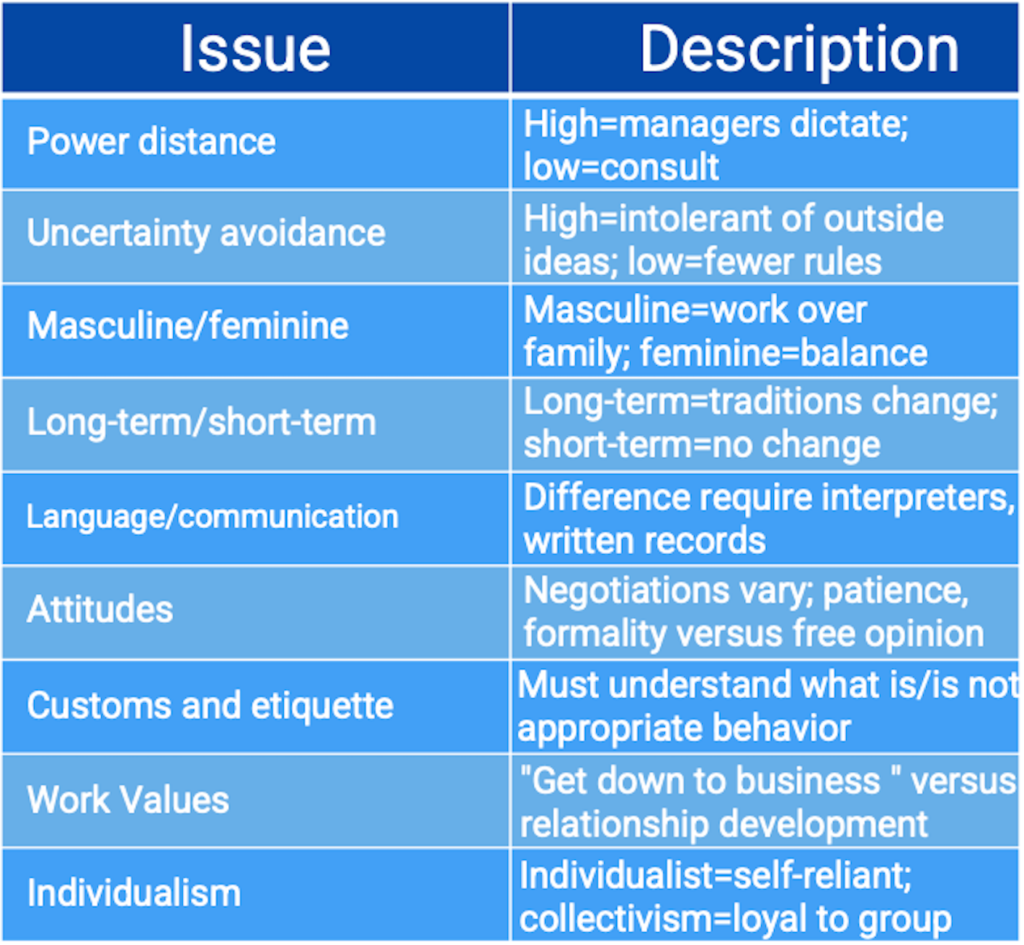When discussing culture, people often focus on the traditions and practices of different countries. However, it’s important to also take into account the cultural atmosphere within businesses when engaging in negotiations.
Cultural Environment – The sociocultural factors of the organization’s external enviornment. It includes values, work ethics, education, religion, and consumer and ecological factors.
Hofstede’s Cultural Dimensions
On the table, you can see the Hofstede model that examines different cultures in various countries. Each category has distinct ranges that can be described. For instance, one of the categories is attitudes, and attitudes towards negotiation can vary from very formal to a less formal free exchange of opinions depending on the country.
When conducting negotiations and making agreements in India, it’s important to establish a personal relationship first before proceeding with formalities. Being too focused on legalities can lead to misunderstandings. Respect, patience, and formality are key virtues to success in negotiations in China. On the other hand, Americans are known for freely expressing their opinions and may expect the same from others, which could potentially lead to conflict situations.
When dealing with suppliers, it’s important to take into account their country culture, whether they’re from abroad or domestic. You should also research the company culture of both the selling and buying organizations. You can do this by checking out their websites and social media profiles, and if available, their 10-K annual report. However, it’s important to keep in mind that there may be exceptions to cultural norms.


